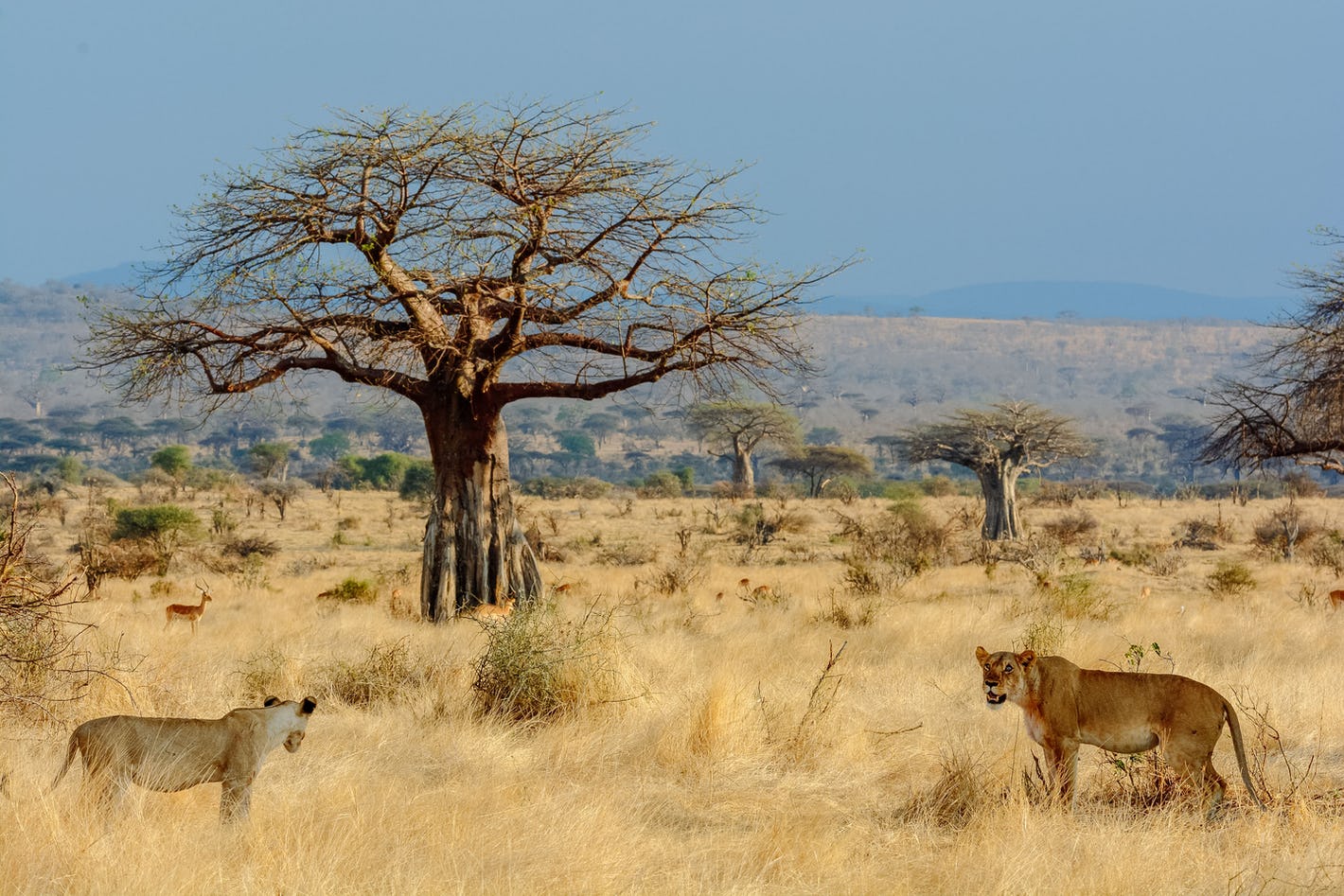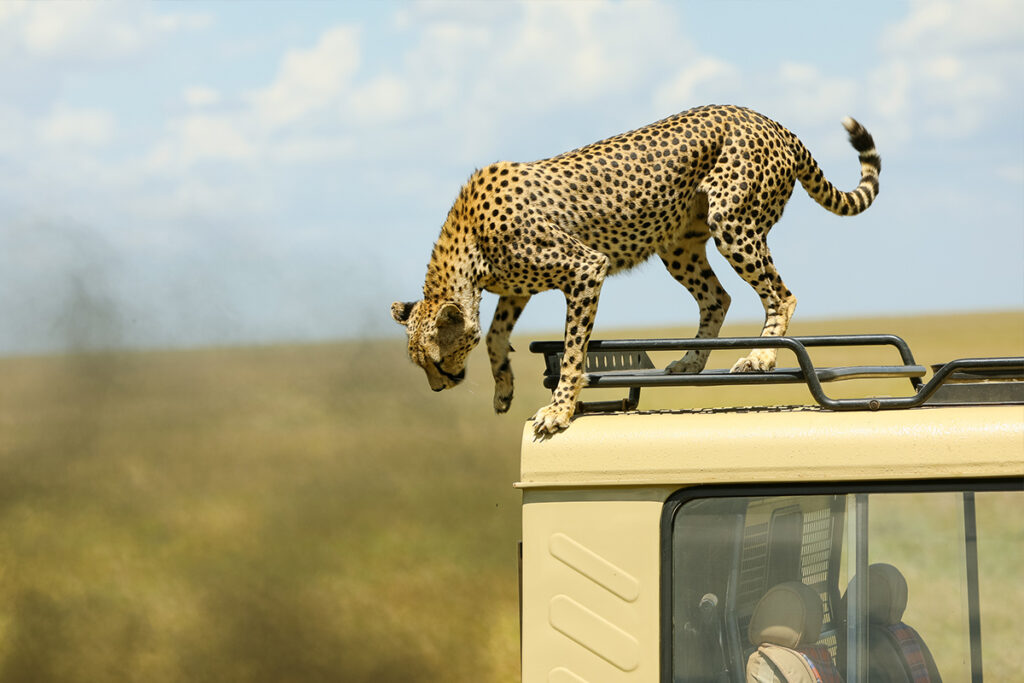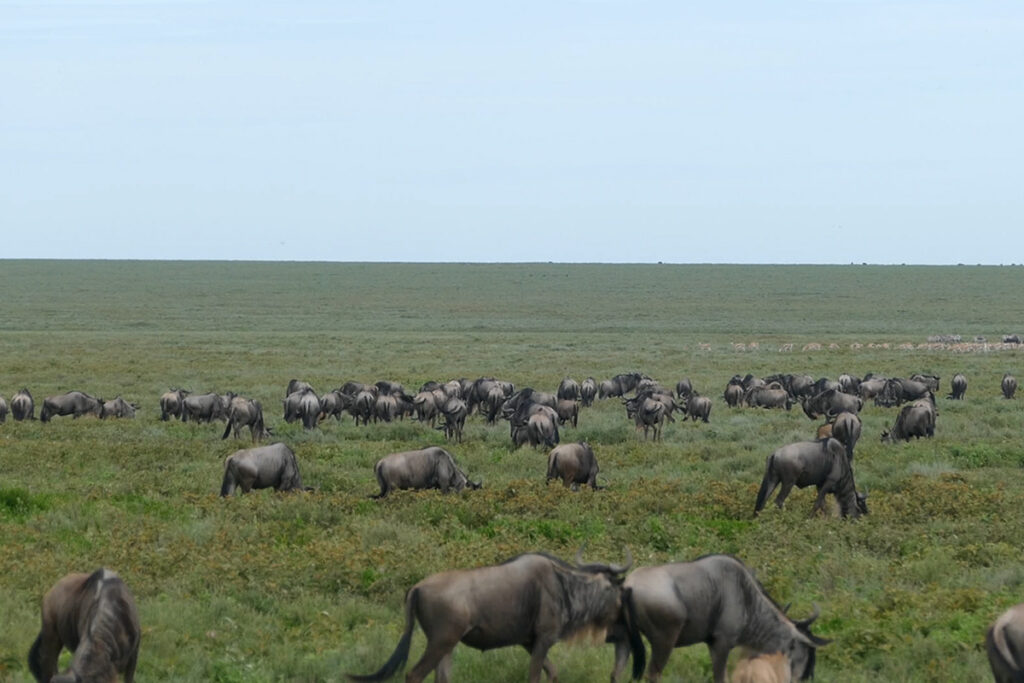Few adventurers in Tanzania ever set foot on the isolated paths winding through the rolling hills and untouched forests of its lesser-known reserves. These hidden corners teem with life, offering a safari experience that is both intimate and exhilarating. Would the world of Tanzanian wildlife be as enchanting without the secret trails that each tell a story of ancient lands and diverse species?
The Selous Game Reserve, covering more than 30,000 square miles, represents the untapped potential of Tanzania’s wild frontier. Established in the early 20th century, it harbors some of Africa’s rarest wildlife, ensuring a glimpse into a bygone era of natural splendor. Engagement with such secluded arenas means travelers can connect deeply with the landscape, promising not just observations but unforgettable connections.

Off-the-Beaten-Path Tanzania Safari: Hidden Gems to Explore
For those seeking adventure beyond the usual safari routes, Tanzania offers untamed landscapes and hidden gems. The remote regions of Nyerere National Park, for instance, are a haven for rare wildlife sightings. Not many tourists venture here, ensuring a peaceful, intimate experience with nature. The park also boasts unspoiled rivers and secluded areas perfect for explorations. Imagine discovering wild plains just like the early explorers did.
Another intriguing destination is the Ruaha National Park, the largest in Tanzania, known for its vast, unvisited wilderness. The park’s diverse habitats offer an impressive range of wildlife, from elephants to wild dogs. Bird enthusiasts will find over 570 species, making it a birdwatcher’s paradise. The remote location ensures fewer tourists, enhancing the sense of seclusion. Ruaha’s pristine environment promises a memorable safari experience.
Engaging with local communities during these safaris provides cultural insights that add depth to the adventure. Villages around these parks often participate in conservation efforts, sharing knowledge about local flora and fauna. Meeting the villagers can also offer a chance to learn traditional crafts or taste authentic Tanzanian cuisine. These interactions support sustainable tourism, benefiting both visitors and locals. It’s a way to give back while enjoying the journey.
Sustainable tourism plays a crucial role in maintaining the beauty and biodiversity of these hidden gems. Responsible travel practices ensure that the pristine landscapes remain unspoiled for future generations. This includes respecting wildlife, minimizing waste, and supporting local conservation projects. Travelers can contribute by choosing eco-friendly lodges and participating in guided tours led by local experts. Together, we can help protect Tanzania’s remarkable natural heritage.
Exploring Lesser-Known Tanzanian Wildlife Reserves
Delving into Tanzania’s lesser-known wildlife reserves can reveal unique experiences away from crowded tourist spots. One such gem is the Udzungwa Mountains National Park, often called the “Galapagos of Africa.” This park is famous for its diverse ecosystems, including rainforests and grassy plateaus. Visitors can hike to hidden waterfalls and observe endemic species like the Udzungwa red colobus monkey.
The Kitulo National Park, nicknamed the “Serengeti of Flowers,” is another unique reserve worth exploring. During the rainy season, the landscape bursts into a vibrant sea of wildflowers. This botanical marvel is home to rare orchids and impressive birdlife. Unlike typical safari parks, Kitulo is a haven for botanists and birdwatchers. The park’s high altitudes offer stunning views and a cooler climate.
For those interested in both wildlife and history, the Saadani National Park combines coastal beauty with rich cultural heritage. It’s the only park where the beach meets the bush, creating a unique ecosystem. Alongside elephants and lions, visitors might spot dolphins and sea turtles. Historical sites within the park tell stories of ancient trade routes and Swahili culture. This blend makes Saadani an intriguing destination.
Engagement with local communities enhances the exploration of these hidden reserves. Many villages around these parks offer eco-friendly tourism experiences. Tourists can participate in cultural tours, including traditional dance performances and local cuisine tastings. These interactions support sustainable tourism and provide income for the local population. In this way, travelers can leave a positive impact while enjoying their adventure.
The Diverse Wildlife in Tanzania’s Secluded Arenas
Tanzania’s secluded wildlife arenas are rich in unique animal species rarely seen by the average tourist. In the Mahale Mountains National Park, chimpanzees thrive in their natural habitat, swinging from trees and displaying fascinating behaviors. This park is a paradise for primate lovers and researchers alike. Observing these primates in the wild offers insights into their complex social structures. Treks through the lush forests provide unforgettable encounters.
Tarangire National Park, though less visited, offers spectacular wildlife diversity, especially during the dry season. The park teems with elephants, which gather in large groups around watering holes. Visitors can also spot rare antelopes such as the oryx and gerenuk. Bird watchers will be thrilled by the more than 550 bird species. The contrast of the animals against the scenic baobab trees is truly breathtaking.
Moving to the north, the remote Lake Natron area provides a unique setting for one of nature’s wonders. This alkaline lake hosts millions of flamingos, their pink feathers reflecting in the shimmering waters. The area is also home to zebras, wildebeest, and small desert animals. The stunning landscape around the lake adds to the allure. Visiting during the breeding season can be especially rewarding.
The wildlife in these secluded areas is often best experienced with the help of knowledgeable guides. They can identify hidden creatures and share detailed information about the ecosystem. Tours led by local experts are invaluable for learning more about these off-the-beaten-path destinations. Investing in guided safaris supports local economies. It also fosters a deeper appreciation of Tanzania’s diverse wildlife.
Experiencing the Untouched Wilderness of Selous Game Reserve
The Selous Game Reserve, located in southern Tanzania, is one of Africa’s greatest wilderness areas. It spans over 30,000 square miles, offering a haven for a variety of wildlife. This reserve is less frequented by tourists, making it ideal for a serene safari experience. Visitors can witness large herds of elephants and an abundance of hippos. The feeling of solitude in such a vast, wild area is unparalleled.
Boat safaris along the Rufiji River are a highlight in Selous. These trips provide a unique perspective on the reserve’s aquatic life. Crocodiles bask on the riverbanks while colorful birds soar above. The tranquility of gliding along the waterways is both relaxing and thrilling. A boat safari is perfect for spotting riverine animals up close.
Walking safaris in Selous allow visitors to connect intimately with the environment. Guided by knowledgeable rangers, guests can explore the bush on foot. This type of safari emphasizes the smaller details of the ecosystem, like tracks and insects. Feeling the crunch of grass underfoot and hearing the sounds of the wild create a vivid, immersive experience. It’s an opportunity to appreciate the reserve’s rich biodiversity from ground level.
To maximize the experience, many lodges and camps in Selous offer comfortable accommodations and local cuisine. Staying in eco-friendly lodges enhances the trip’s authenticity. These lodges often use sustainable practices to minimize their environmental impact. Visitors can unwind after a day of exploration in a peaceful setting. Enjoying traditional Tanzanian dishes adds a delightful cultural touch to the adventure.
Supporting conservation efforts is another important aspect of visiting Selous. Tourism helps fund vital projects that protect the reserve’s wildlife and habitats. Travelers can contribute by choosing eco-tourism options and participating in conservation programs. Engaging with local communities also supports the regional economy. Together, these actions ensure the preservation of this unique wilderness for future generations.
Cultural Insights: Interacting with Local Communities During Safari
Connecting with local communities offers rich cultural insights during a Tanzania safari. Visitors can learn directly from indigenous groups, such as the Maasai, about their traditional ways of life. These interactions often include cultural tours that highlight local customs and daily activities. Visitors can participate in beadwork, a traditional craft of the Maasai. Such experiences offer a deeper understanding of the region’s cultural heritage.
Engagements with local villagers also present opportunities to sample authentic Tanzanian cuisine. Meals might include dishes like ugali, a staple made from cornmeal, paired with succulent stews. Food is a delightful entry point into the culture, as each dish tells a story of the land and its people. Sharing a meal with locals fosters a sense of connection and mutual respect. Many visitors find this aspect of their safari particularly memorable.
Markets in these communities offer an array of handicrafts and artworks for visitors to explore. These markets are vibrant places where culture and commerce intersect. Visitors can purchase hand-carved items, colorful fabrics, or traditional jewelry. Buying these products supports local artists and contributes to the community’s economy. It’s a wonderful way to bring home a piece of Tanzania while supporting sustainable tourism.
Interacting meaningfully with local communities requires sensitivity and respect for their traditions. It’s essential to approach these encounters with an open mind and a willingness to listen. Respect local customs, ask questions, and show genuine interest in their stories. This respectful approach enriches the safari experience and fosters goodwill. In turn, locals share their world, adding invaluable depth to your adventure.
Many safari providers integrate community interactions as part of their offerings. This ensures travelers have structured opportunities to engage with locals. Guides help facilitate these connections, often adding context and translation. Such programs help bridge cultural gaps and enhance mutual understanding. Participating in these experiences adds a new, enriching dimension to any safari trip.
The Role of Sustainable Tourism in Conservation Efforts
Sustainable tourism plays a vital role in protecting the natural environments of Tanzania. By focusing on eco-friendly practices, both travelers and communities help preserve delicate ecosystems. This includes using resources wisely and minimizing waste, ensuring pristine landscapes remain unspoiled. Tours that emphasize conservation educate visitors about the importance of the environment. This approach fosters a sense of responsibility among tourists to act as stewards of the earth.
The benefits of sustainable tourism extend beyond nature conservation. Local communities often gain economic advantages from tourism when it’s done responsibly. Eco-tourism initiatives provide jobs in areas like guiding, lodging, and crafting. This income supports local families and encourages the development of community projects. As a result, these communities view wildlife conservation as a shared, valuable goal.
Tour operators contribute significantly by implementing eco-friendly practices in their operations. They might use solar-powered facilities or offer eco-lodges with low environmental impact. By reducing their carbon footprint, these operators set an example for sustainable business practices. Their efforts help mitigate tourism’s impact on the planet. Using eco-friendly methods attracts tourists who prioritize sustainability in their travels.
Education is a powerful tool in sustainable tourism’s efforts. Programs that teach both locals and visitors about environmental conservation have a lasting impact. Workshops and guided tours often highlight how to protect local flora and fauna. Informed travelers are more likely to respect the environment and advocate for its protection. Thus, education becomes a pivotal factor in promoting long-term conservation efforts.
Innovative conservation projects often find support through sustainable tourism funding. Many such projects aim to restore habitats and protect endangered species. When tourists participate in conservation activities, like tree planting or wildlife monitoring, they contribute directly to these initiatives. This hands-on experience deepens their connection to the environment. Ultimately, sustainable tourism becomes an integral part of preserving Tanzania’s natural beauty.
Key Takeaways
- Tanzania’s hidden safaris offer unique, remote wildlife adventures.
- Discover serene landscapes in lesser-known parks like Ruaha and Selous.
- Enjoy intimate encounters with diverse animal species away from crowds.
- Cultural interactions with local communities enrich the safari experience.
- Sustainable tourism helps protect these untouched natural wonders.



